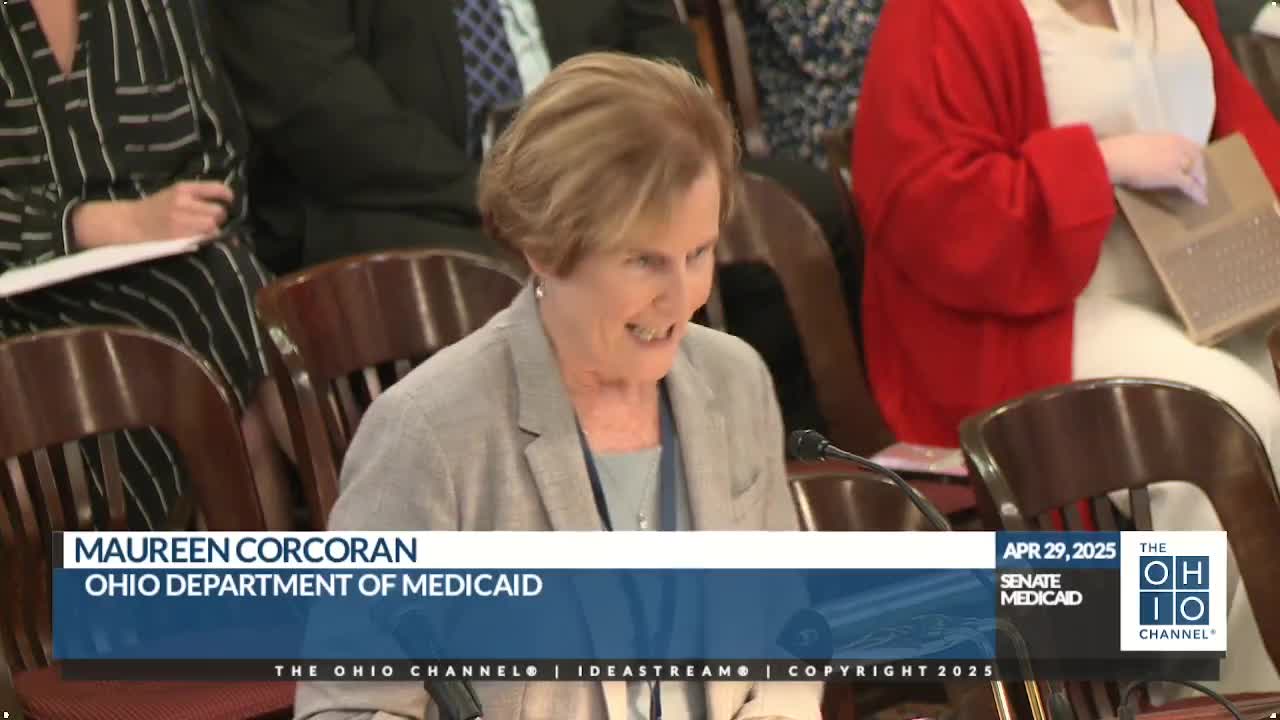Ohio Governor DeWine unveils $42.3B budget proposal focused on Medicaid and health improvements
April 29, 2025 | Medicaid, Senate, Committees, Legislative, Ohio
This article was created by AI summarizing key points discussed. AI makes mistakes, so for full details and context, please refer to the video of the full meeting. Please report any errors so we can fix them. Report an error »

In a pivotal meeting of the Ohio Senate Medicaid Committee, officials gathered to discuss the state’s Medicaid budget for the upcoming fiscal years, emphasizing the need for strategic improvements in health services for Ohioans. The atmosphere was charged with anticipation as committee members prepared to dissect a comprehensive budget proposal totaling over $42 billion, aimed at solidifying the progress made under Governor Mike DeWine's administration.
The budget request for fiscal years 2026 and 2027 reflects a nuanced approach to managing Medicaid expenditures, with a notable decrease of 2.8% in state chair funding for 2026, followed by a projected increase of 7.1% for 2027. This fluctuation raises critical questions about the sustainability of Medicaid spending, especially as the estimated caseload remains nearly flat.
Key discussions revolved around the factors driving a 7-8% growth in Medicaid spending despite stable enrollment numbers. The committee reviewed a detailed waterfall chart that illustrated various components influencing the budget, including increases in hospital financing and per-member costs. These elements, alongside new policy initiatives and federal mandates, contribute to the overall financial landscape of the Medicaid program.
The meeting also highlighted the impact of one-time federal funding from the American Rescue Plan Act (ARPA), which has allowed Ohio to leverage approximately $5.1 billion in enhanced federal funds. This influx has been instrumental in offsetting general revenue costs, creating a complex but manageable budgetary pattern.
As the committee navigated through the intricacies of the budget, they underscored the importance of cost containment initiatives, which are projected to yield over $3.6 billion in state general revenue fund savings. These measures are crucial for ensuring that Ohio can continue to provide essential health services while maintaining fiscal responsibility.
In conclusion, the discussions at the Ohio Senate Medicaid Committee meeting not only set the stage for the upcoming budget but also reflected a broader commitment to enhancing the health and wellness of Ohioans. As the state prepares to implement these financial strategies, the implications for Medicaid recipients and healthcare providers alike will be closely monitored in the months to come.
The budget request for fiscal years 2026 and 2027 reflects a nuanced approach to managing Medicaid expenditures, with a notable decrease of 2.8% in state chair funding for 2026, followed by a projected increase of 7.1% for 2027. This fluctuation raises critical questions about the sustainability of Medicaid spending, especially as the estimated caseload remains nearly flat.
Key discussions revolved around the factors driving a 7-8% growth in Medicaid spending despite stable enrollment numbers. The committee reviewed a detailed waterfall chart that illustrated various components influencing the budget, including increases in hospital financing and per-member costs. These elements, alongside new policy initiatives and federal mandates, contribute to the overall financial landscape of the Medicaid program.
The meeting also highlighted the impact of one-time federal funding from the American Rescue Plan Act (ARPA), which has allowed Ohio to leverage approximately $5.1 billion in enhanced federal funds. This influx has been instrumental in offsetting general revenue costs, creating a complex but manageable budgetary pattern.
As the committee navigated through the intricacies of the budget, they underscored the importance of cost containment initiatives, which are projected to yield over $3.6 billion in state general revenue fund savings. These measures are crucial for ensuring that Ohio can continue to provide essential health services while maintaining fiscal responsibility.
In conclusion, the discussions at the Ohio Senate Medicaid Committee meeting not only set the stage for the upcoming budget but also reflected a broader commitment to enhancing the health and wellness of Ohioans. As the state prepares to implement these financial strategies, the implications for Medicaid recipients and healthcare providers alike will be closely monitored in the months to come.
View full meeting
This article is based on a recent meeting—watch the full video and explore the complete transcript for deeper insights into the discussion.
View full meeting
